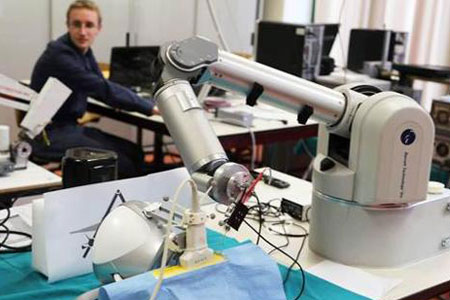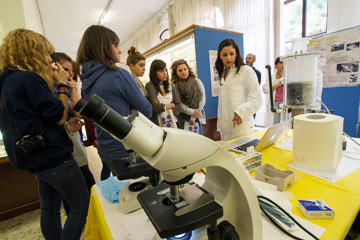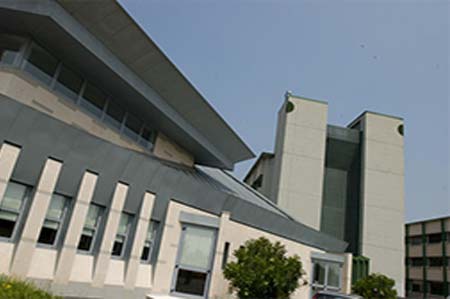In Kirk et al. (Cell systems, 4(3), 2017), il concetto di cross-talk tra cromosomi, ovvero la inter-connettività dell’informazione cromosomica, è stata studiato attraverso una rappresentazione a grafo delle interazioni fisiche tra proteine. Per ogni proteina viene individuato il cromosoma di riferimento. Quindi, il modello analizza il bilanciamento tra la inter-connettività di un cromosoma, prendendo in considerazione le interazioni proteiche con il resto del genoma, e la intra-connettività. Tali studi hanno evidenziato particolari comportamenti del genoma umano che supportano la sopravvivenza dei pazienti affetti da trisomia del cromosoma 21. Infatti, il cromosoma umano 21 mostra una spiccata intra-connettività rispetto alle sue connessioni inter-cromosomiche.
Una estensione di tale modello è stata ottenuta attraverso la creazione di un sistema eterogeneo che vede coinvolte le proteine come anche degli elementi biologici molto importanti per la loro regolazione, i microRNA. Tali elementi sono dei particolari RNA che non fanno parte del processo principale di traduzione in proteina, al contrario, date le loro lunghezze ridotte, interagiscono in modo fisico con le altre macromolecole (RNA codificante e proteine) regolandone i livelli di espressione. Attraverso tale modello è possibile studiare le interazioni principali a livello proteico arricchendo la rappresentazione del sistema cellulare con le connessioni regolatrici di tipo microRNA-proteina. Lo studio della regolazione tra cromosomi, in riferimento alla auto-regolazione di uno specifico cromosoma, ha evidenziato interessanti differenze tra la regolazione del sistema cellulare umano in condizioni sane rispetto a condizioni tumorali.
Le attività di ricerca saranno principalmente centrate sulla progettazione ed implementazione di metodi per l'analisi di tali sistemi complessi. Tra gli obbiettivi prefissati, vi è l'estensione del modello matematico per l'analisi della connettività inter-cromosomica. In particolare, il modello verrà arricchito con due ulteriori tipi di entità biologiche. Il primo tipo di entità è da considerarsi a livello genomico e comprende l'insieme dei fattori di trascrizioni per la regolazione genica, quindi sia di geni codificanti proteine che geni produttori di RNA non codificante. Invece, il secondo tipo di entità agisce a livello sistemistico, attraverso l'interazione diretta con le altre enti biologiche, ed è data dalla famiglia di RNA non codificante per proteina ma con funzioni simili, ovvero i long non-coding RNA. Inoltre, le interazioni tra i quattro tipi di entità biologiche verranno rappresentate nella forma di archi pesati. I pesi assegnati a tali archi verranno estratti da studi precedentemente svolti e rappresenteranno sia la validità delle interazioni fisiche, sia concetti più astratti come la correlazione di tali elementi in specifiche condizioni patologiche.







